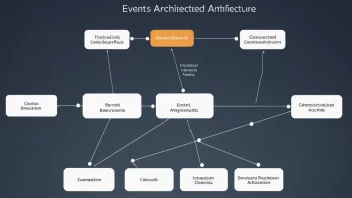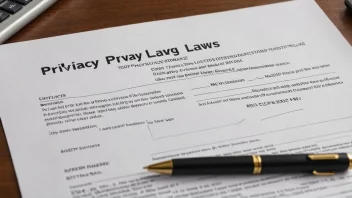Open source software (OSS) has revolutionized the way software is developed and distributed. By allowing users to access, modify, and share source code, open source licensing promotes collaboration and innovation. However, navigating the complexities of open source licenses can be challenging, especially for developers and organizations looking to adopt or create open source projects. This guide offers a comprehensive overview of open source licensing, exploring its history, types of licenses, legal considerations, and practical implications for developers and users.
Understanding Open Source Licensing
Open source licensing refers to the legal framework that governs how software can be used, modified, and shared. These licenses define the rights and responsibilities of both the creators and users of software, ensuring that the principles of openness and collaboration are upheld.
History of Open Source Licensing
The origins of open source licensing can be traced back to the early days of computing when software was typically shared freely among users. However, as the software industry began to grow, the need for formal licensing emerged. The Free Software Foundation (FSF) and the Open Source Initiative (OSI) were established in the 1980s and 1990s, respectively, to promote and define open source principles.
Why Open Source Licensing Matters
Open source licenses are crucial for several reasons:
- Legal Protection: They provide legal protection for both developers and users, ensuring that everyone understands their rights and obligations.
- Promoting Collaboration: By clearly defining how software can be shared and modified, licenses foster a collaborative environment that encourages innovation.
- Encouraging Adoption: A well-defined license can increase the adoption of software by reducing legal concerns for users, businesses, and organizations.
Types of Open Source Licenses
There are various open source licenses, each with its own terms and conditions. They can be broadly categorized into two main types: permissive licenses and copyleft licenses.
Permissive Licenses
Permissive licenses allow users to use, modify, and distribute software with minimal restrictions. Examples include:
- MIT License: A simple and permissive license that allows anyone to do almost anything with the software, as long as they include the original copyright notice.
- Apache License 2.0: Similar to the MIT License but includes provisions for patent rights, making it more favorable for commercial use.
- BSD License: A family of permissive licenses that allows for redistribution and modification, with fewer restrictions than copyleft licenses.
Copyleft Licenses
Copyleft licenses require that any derivative work based on the original software be distributed under the same license. This ensures that the software and its modifications remain open source. Examples include:
- GNU General Public License (GPL): One of the most widely used copyleft licenses, requiring that any software derived from GPL-licensed code be released under the GPL.
- GNU Lesser General Public License (LGPL): A more permissive version of the GPL, allowing for linking with proprietary software under certain conditions.
- Affero General Public License (AGPL): Similar to the GPL, but includes additional provisions for software used over a network.
Legal Considerations in Open Source Licensing
Understanding the legal implications of open source licensing is vital for developers and organizations. Here are some key considerations:
License Compatibility
Not all open source licenses are compatible with each other. When combining code from different projects, developers must ensure that the licenses are compatible to avoid legal issues.
Attribution and Copyright
Many open source licenses require attribution to the original authors. Developers must be diligent in providing proper credit and complying with copyright requirements.
Compliance and Enforcement
While most open source licenses are not enforced aggressively, failure to comply with the terms can lead to legal action. Organizations should establish compliance programs to ensure adherence to licensing requirements.
Practical Implications of Open Source Licensing
For developers and organizations, choosing the right open source license can have significant implications for their projects. Here are a few practical considerations:
Choosing the Right License
When selecting an open source license, developers should consider their goals for the project, the intended audience, and how they want others to interact with their code. For example:
- If the goal is widespread adoption and contributions, a permissive license like the MIT License may be ideal.
- If the goal is to maintain control over modifications and ensure continued openness, a copyleft license like the GPL may be more appropriate.
Impact on Community and Contributions
The chosen license can shape the community around a project. Permissive licenses often attract a broader range of contributors, including commercial entities, while copyleft licenses may foster a community focused on collaborative improvement and advocacy for open source principles.
Open Source Compliance Programs
Organizations that utilize open source software should implement compliance programs to manage their use of open source licenses effectively. This includes:
- Educating employees on the importance of licensing and compliance.
- Establishing policies for evaluating and selecting open source software.
- Regularly auditing open source components to ensure compliance with licensing terms.
Case Studies in Open Source Licensing
Examining real-world examples can provide valuable insights into the implications of open source licensing. Here are two notable case studies:
Case Study 1: Red Hat and the GPL
Red Hat, a leading provider of open source solutions, has built its business model around the GNU General Public License (GPL). By providing enterprise support and services for GPL-licensed software, Red Hat demonstrates how a copyleft license can facilitate a successful business model while contributing to the open source community.
Case Study 2: Mozilla and the MPL
The Mozilla Public License (MPL) is another example of a successful open source license. Mozilla has used the MPL to develop its Firefox web browser, allowing for both open source collaboration and commercial partnerships. This balance has enabled Mozilla to maintain a strong community while also generating revenue through partnerships.
Conclusion
Open source licensing is a fundamental aspect of the software development landscape. Understanding the different types of licenses, their legal implications, and their practical applications is essential for developers, organizations, and users alike. By navigating the complexities of open source licensing effectively, stakeholders can harness the power of open source software to foster innovation, collaboration, and growth. Ultimately, the right licensing choice can not only protect intellectual property but also enhance community engagement and drive the success of open source projects.






